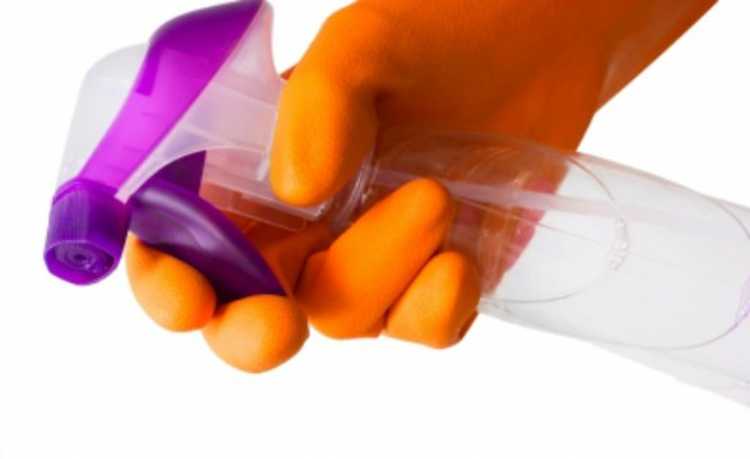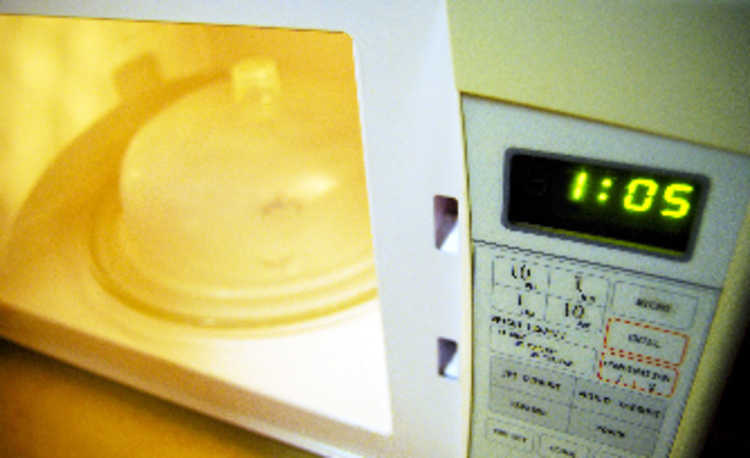What are the toxic components of e-waste?
Incorrect disposal of electronic waste causes release of toxic components into the environment. Understand the health risks

Electronic equipment has several toxic components in its structures. Once they lose their function, if this electronic waste is disposed of incorrectly, these toxic wastes can contaminate the soil and groundwater, putting public health at risk. According to the Mineral Technology Center (CETEM), around 70% of the heavy metals found in dumps and controlled landfills come from discarded electronic equipment.
Lately, many studies are being done to discover the amount of toxic components in electronics, which are more and more common in our daily lives. A study by the Ann Arbor Ecology Center, in partnership with Ifixit, researched 36 cell phones of different makes and models, analyzing the amount of toxic components present in the devices, such as lead, bromine and cadmium. These are elements that, from their extraction to the end of the product's life, have the potential to harm the environment and health.
The International Agency for Research on Cancer (IARC) has a classification for chemical substances, as follows:
- Group 1 - Carcinogenic to humans;
- Group 2A - Probable carcinogen;
- Group 2B - Possible carcinogen;
- Group 3 - Not classifiable as a carcinogen;
- Group 4 - Probable not carcinogenic.
Below, there are 22 substances that constitute electronic equipment and that can cause some risk to human beings:
| Contaminants | Scratchs |
|---|---|
| Aluminum | Acute intoxication: Obnubilation, coma, convulsions. Chronic Poisoning: Intermittent speech disorders (stuttering), neurological disorders that prevent coordinated movement, myoclonic spasms, seizures, personality changes, global dementia. Carcinogen in bladder, lung (Group 1) |
| Antimony | Acute intoxication: high fever, gastric mucosal irritation, violent vomiting, abdominal cramps, diarrhea, swelling of the limbs, foul breath, and rash. Chronic Poisoning: Lung inflammation, bronchitis and chronic emphysema. Lung Carcinogen. (Group 2B) |
| arsenic | Acute intoxication: abdominal pain, vomiting, diarrhea, redness of the skin, muscle pain, weakness, numbness and tingling of the extremities, cramps and erythematous papule. Chronic intoxication: dermal lesions such as hyper and hypopigmentation, peripheral neuropathy, skin, bladder and lung cancer, and peripheral vascular disease. Carcinogenic for skin, lung, bladder and kidney. (Group 1) |
| Beryllium | Acute intoxication: chills, fever, painful cough and accumulation of fluid in the lungs, which can lead to death. Chronic intoxication: beryliosis or chronic pulmonary granulomatosis, lung lesions. Lung carcinogen. (Group 1) |
| Bismuth | Acute intoxication: nausea, vomiting, jaundice, fever, diarrhea, cyanosis and dyspnoea. Chronic intoxication: gastrointestinal disturbances, ulcerative gingivostomatitis, general weakness, loss of appetite, dermatitis and kidney damage. |
| Cadmium | Acute intoxication: abdominal pain, nausea, vomiting, diarrhea. Chronic intoxication: loss of smell, coughing, shortness of breath, weight loss, irritability, bone weakness, damage to the nervous, respiratory, digestive, blood and bone systems. Carcinogenic for lungs and kidneys. (Group 1) |
| Lead | Acute intoxication: weakness, irritability, asthenia, nausea, abdominal pain with constipation and anemia. Chronic intoxication: loss of appetite, weight loss, apathy, irritability, anemia, damage to the nervous, respiratory, digestive, blood and bone systems. Carcinogenic for kidneys and nervous system. (Group 2A) |
| Cobalt | Acute poisoning: decreased ventilatory function, congestion, edema and hemorrhage of the lungs, nausea, vomiting, diarrhea, liver damage and allergic dermatitis Chronic intoxication: bronchial asthma, contact eczema, cardiomyopathy and hematological problems, pneumoconiosis and interstitial pulmonary fibrosis. Lung Carcinogen. (Group 2B) |
| Copper | Acute intoxication: nausea, vomiting, diarrhea, hemolytic anemia, renal failure, liver failure and coma, abdominal pain, dizziness, tachycardia, gastrointestinal bleeding. Chronic intoxication: liver failure, Wilson's disease. Carcinogenic: has a predominant factor in Menkes and Wilson's Disease. |
| Chromium (Hexavalent) | Acute intoxication: dizziness, intense thirst, abdominal pain, vomiting, constipation. Chronic intoxication: dermatitis, skin edema, nasal ulceration, conjunctivitis, nausea, vomiting, loss of appetite, rapid liver growth. Carcinogenic for skin, lungs and liver. (Group 1) |
| Tin | Acute Poisoning: Nausea, vomiting and diarrhea, abdominal pain, headache, eye and skin irritation. Chronic intoxication: neurotoxicity, Alzheimer's, cerebral hemorrhage, glioblastoma. |
| Iron | Acute poisoning: direct damage to the intestinal mucosa, affects mitochondrial function, acidosis, blood clotting disorders, hyper or hypoglycemia, acute tubular necrosis, acute liver failure. Chronic intoxication: abdominal discomfort, lethargy and fatigue. Carcinogenic for lungs, digestive system. (Group 1) |
| Phthalate (from PVC) | Acute intoxication: allergic symptoms and lung problems. Chronic intoxication: damage to the reproductive system, liver and kidney problems, negative effect on metabolic processes Prostate, pancreas and multiple myeloma carcinogens (Group 2B) |
| Lithium | Acute intoxication: vomiting, diarrhea, ataxia, cardiac arrhythmias, hypotension and albuminuria. Chronic intoxication: affects the nervous system. |
| Mercury | Acute poisoning: Dark gray appearance in the mouth and pharynx, intense pain, vomiting, bleeding gums, bitter taste in the mouth, burning in the digestive tract, severe or bloody diarrhea, inflammation in the mouth, falling or loosening of teeth, glossitis, severe mucosal swelling , kidney necrosis, severe liver problems, can cause rapid death (1 or 2 days). Chronic intoxication: Digestive and nervous disorders, cachexia, stomatitis, salivation, bad breath, anemia, hypertension, loosening of teeth, central nervous system problems, mild kidney disorders, possibilities of chromosomal alteration. Carcinogenic in the system: Methyl mercury compounds are classified as a possible carcinogen (Group 2B), but metallic mercury and inorganic mercury compounds are not classified as carcinogenic (Group 3) |
| Nickel | Acute poisoning: burning and itchy hands, redness and rash on fingers and forearms, pulmonary edema and pneumonia. Chronic intoxication: allergic dermatitis, conjunctivitis, eosinophilic pneumonia (Leoffler's syndrome), asthma, chronic rhinitis, nasal sinusitis, and chronic lung irritation. Lung and paranasal sinuses carcinogen. (Group 1) |
| Silver | Acute intoxication: coma, pleural edema, hemolysis and bone marrow failure Chronic intoxication: argyria, skin pigmentation, nails, gums. |
| Brominated flame retardants | Acute intoxication: liver problems, affects the immune system. Chronic intoxication: bioaccumulation in breast milk and blood, interferes with bone and brain development, affects the neurological and behavioral system and thyroid hormones. |
| Selenium | Acute intoxication: anorexia, severe dyspnea, foamy nasal discharge, cyanosis, tremor, hyperthermia, blindness, tachycardia, cardiac arrhythmias, ataxia and exhaustion, pale pulmonary edema, cardiac and hydrothorax (fluid in the lung). Chronic intoxication: Blindness or incoordination, metabolic alkalosis. Non-carcinogenic (Group 3) |
| Vanadium | Acute intoxication: headache, palpitations, sweating and general weakness, kidney damage, bronchitis and bronchopneumonia. Chronic intoxication: rhinitis, pharyngitis, bronchitis, chronic cough, wheezing, shortness of breath and fatigue. Lung carcinogen, genetic alteration (Group 2B) |
| Zinc | Acute poisoning (rare cases): nausea, vomiting, abdominal pain, diarrhea, malaise, tiredness, gastric ulcerations, kidney damage and adverse effects on the immune system. Chronic intoxication: anemia, increased LDL, decreased HDL and altered T lymphocytes. |
The presence of so many toxic components in electronic equipment is what makes the correct disposal of electronic waste so important. If you have electronic waste at home, check the disposal sites on the free search engine at eCycle portal . Do your part so that your electronic waste does not become toxic waste!










